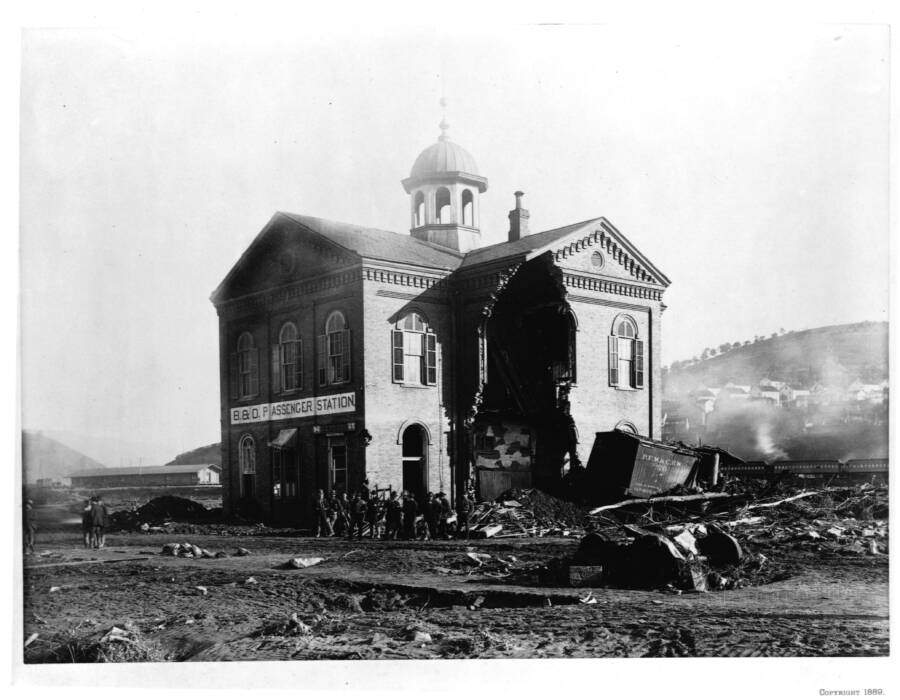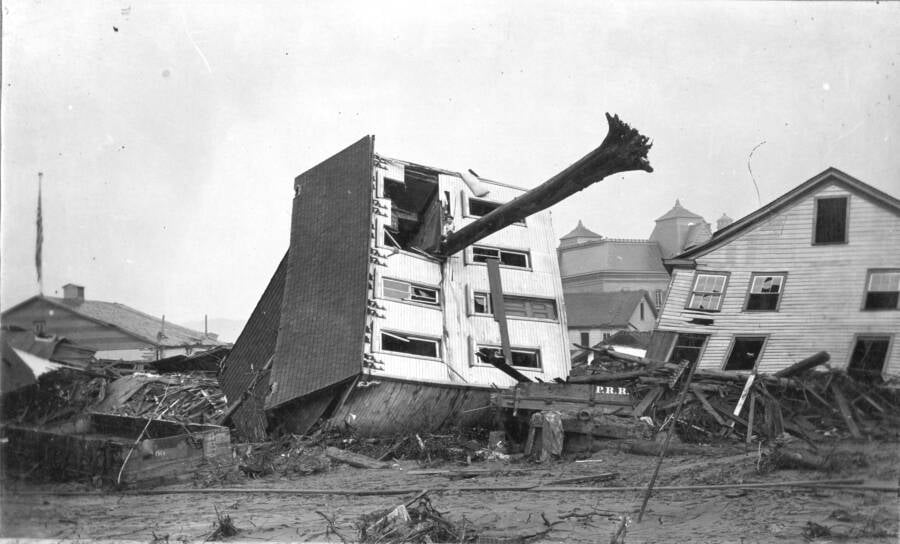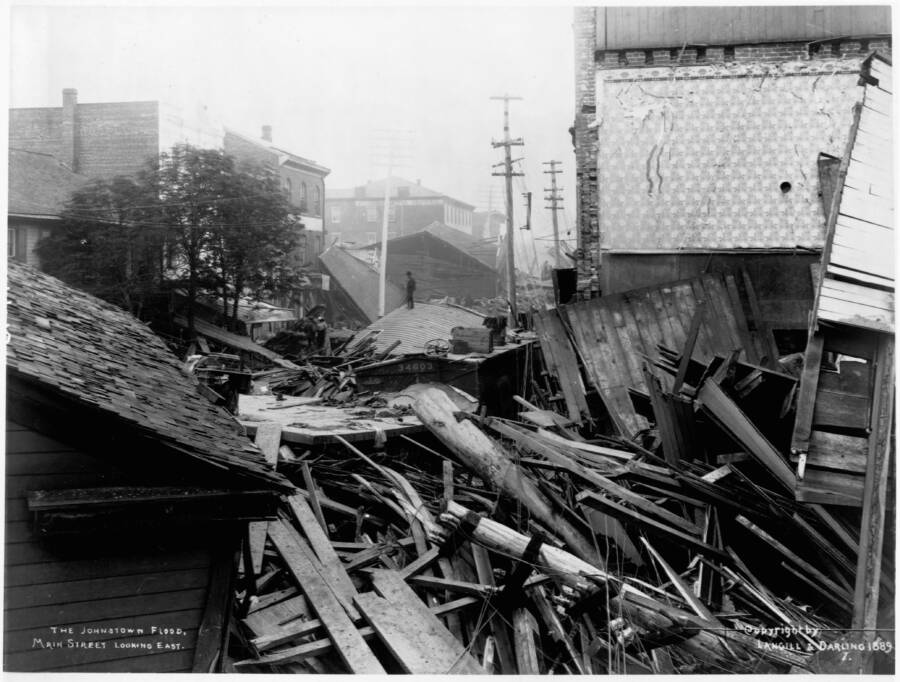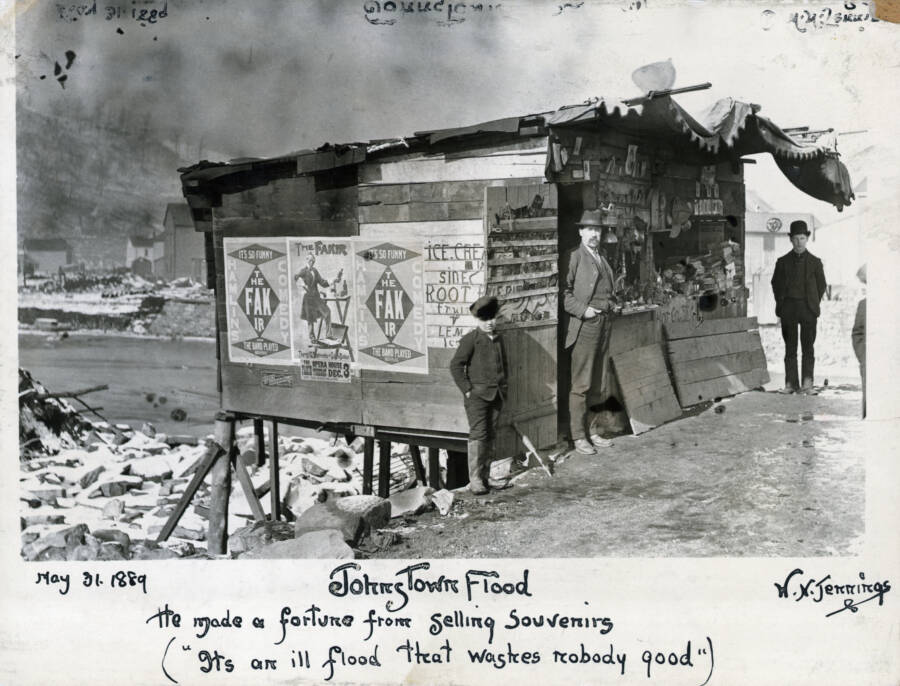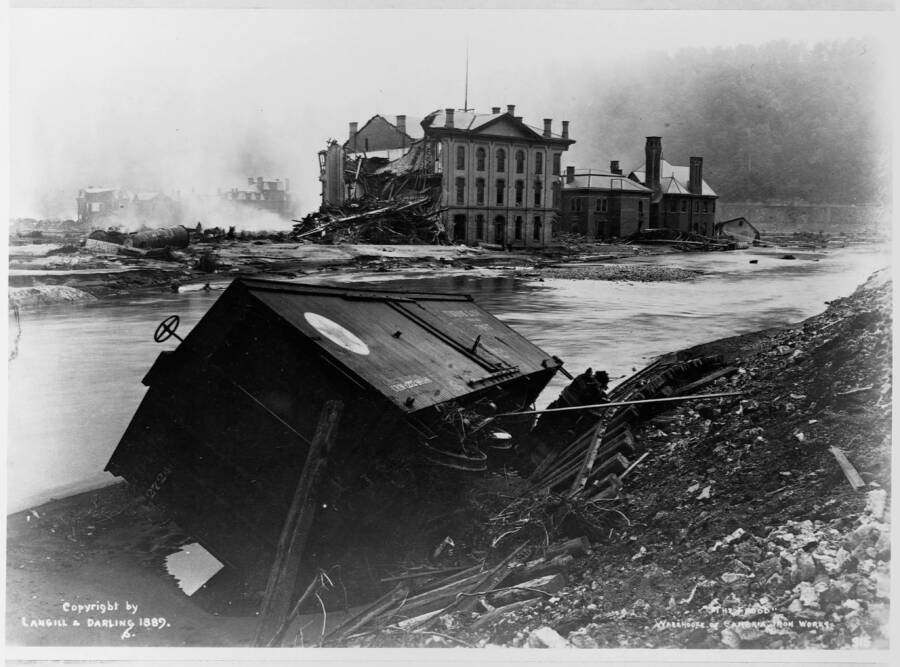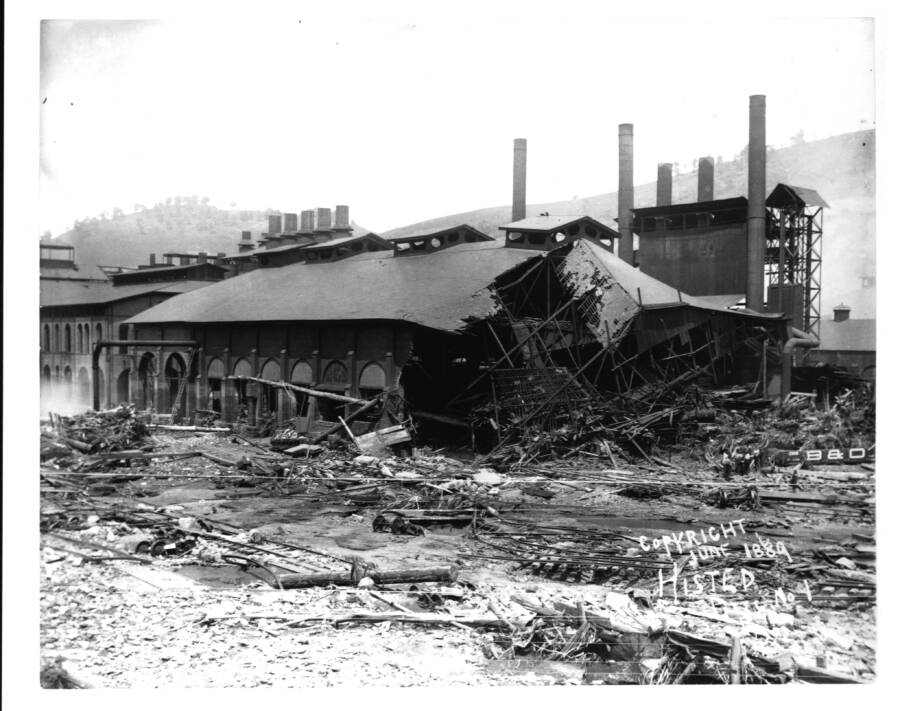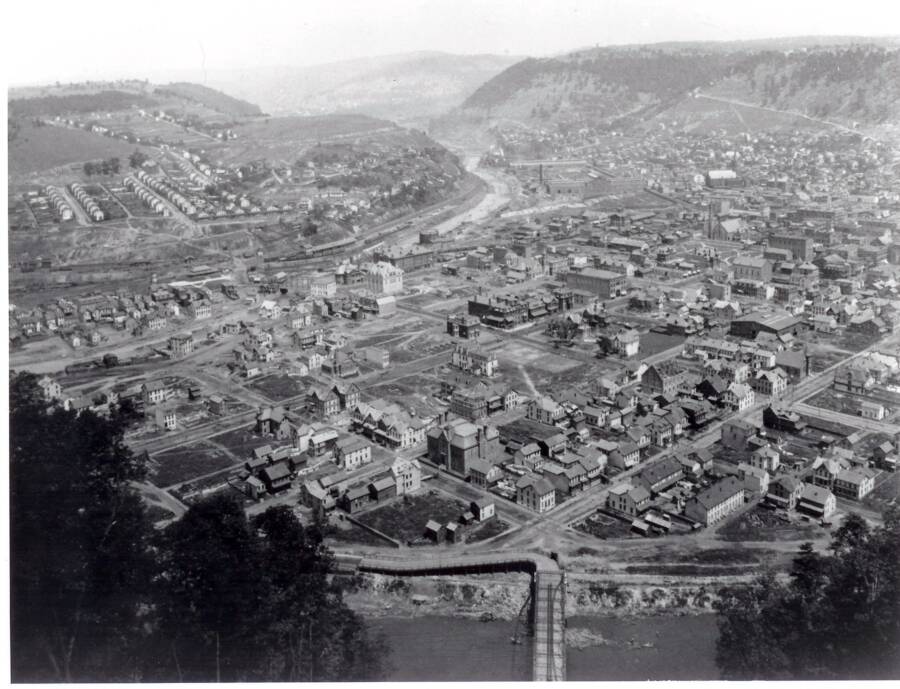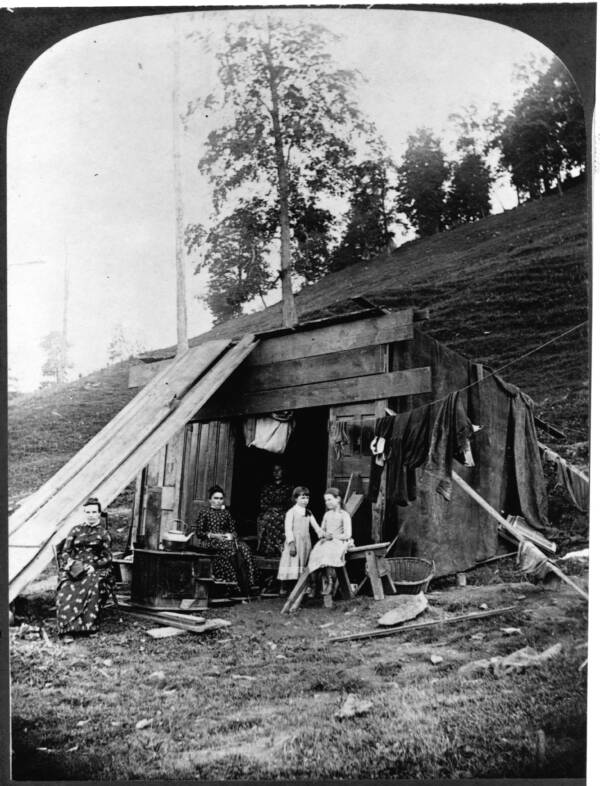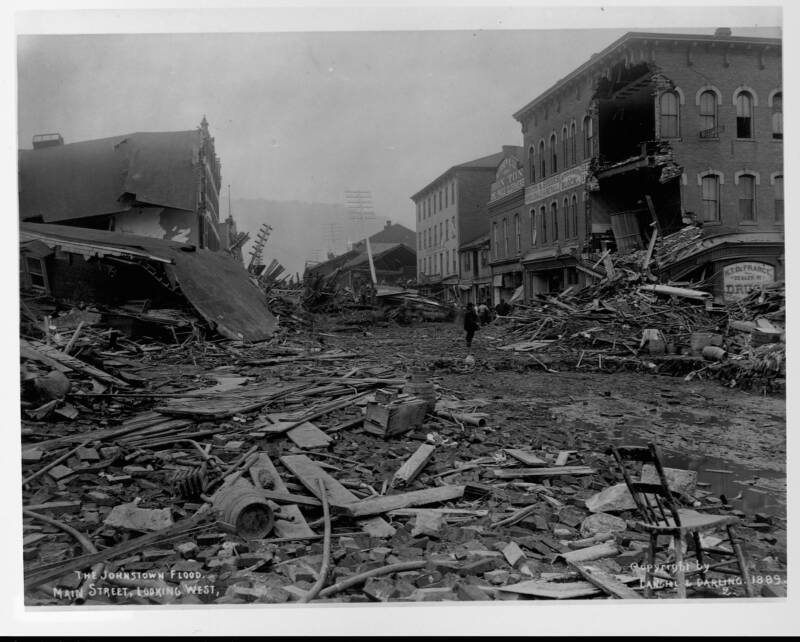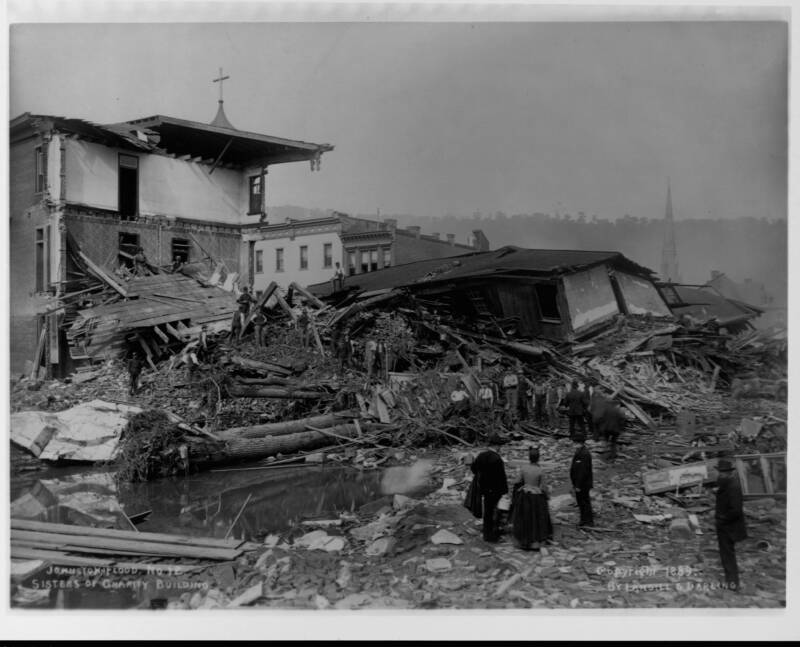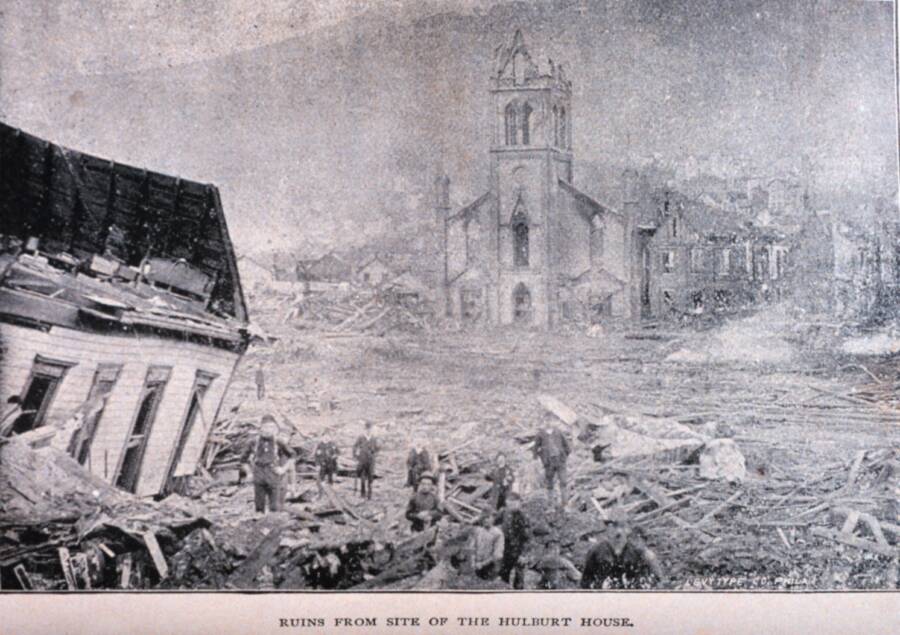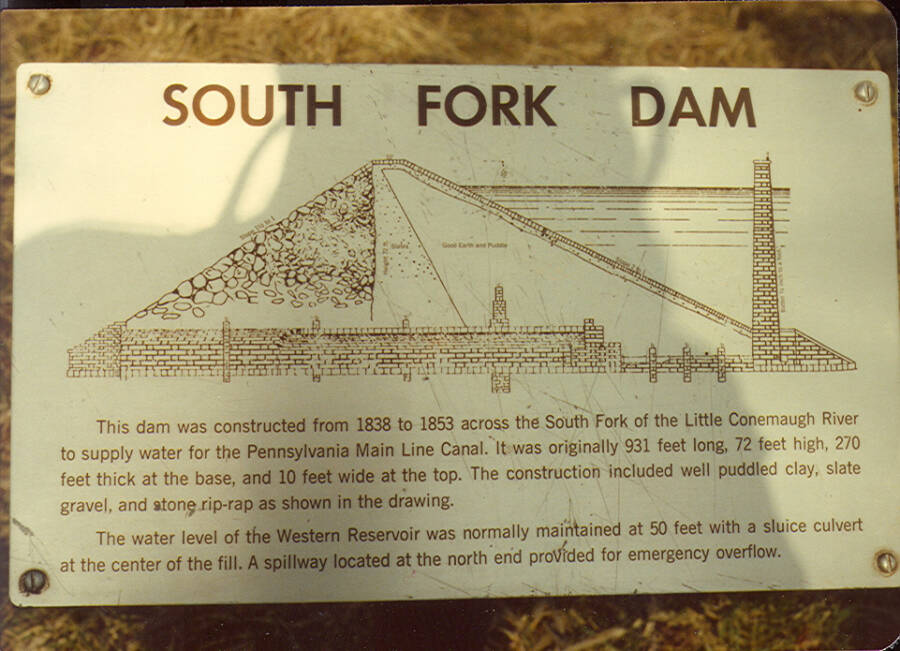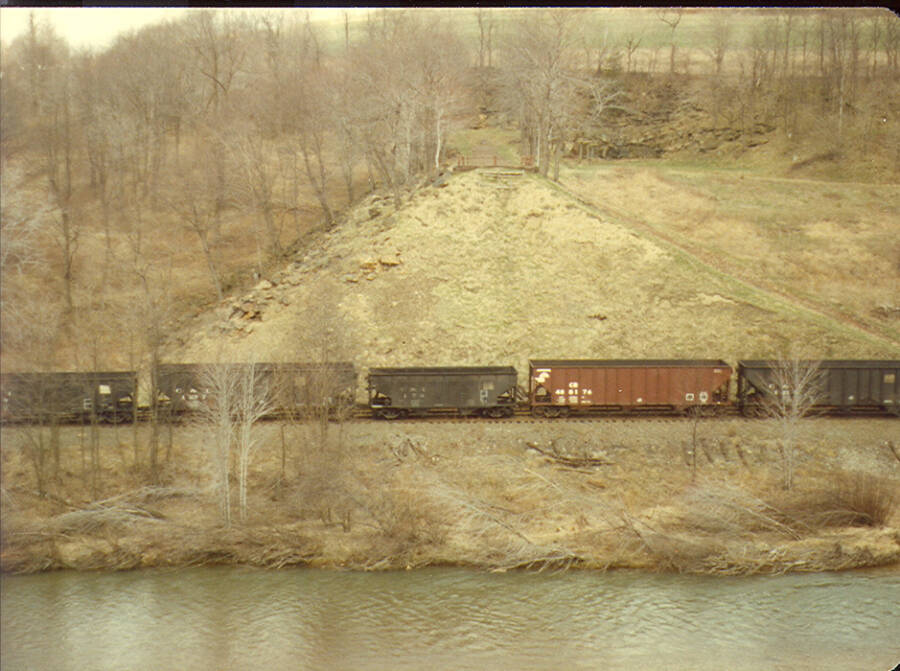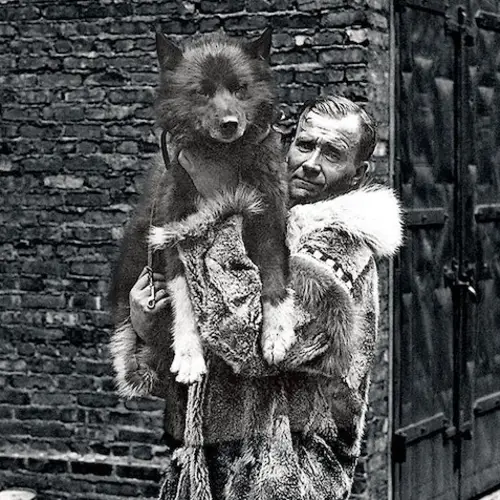On May 31, 1889, the Johnstown Flood killed more than 2,200 people in southwestern Pennsylvania when the long-neglected South Fork Dam suddenly gave way.
Like many other towns in the Rust Belt, Johnstown, Pennsylvania, was a bustling community in the late 1800s and early 1900s when the steel industry was at its height. Tragically, the Johnstown Flood of 1889 wiped out nearly ten percent of the area’s booming population.
Located 60 miles east of Pittsburgh, Johnstown was built on a plain between the Little Conemaugh and Stony Creek Rivers, which made the city prone to frequent flooding. In the mid-1800s, a dam was built on the Little Conemaugh, 14 miles upstream from Johnstown, to help control these disasters.
Unfortunately, when the dam failed 50 years later, Johnstown experienced one of the most devastating floods in American history.
The Catastrophic Failure Of The South Fork Dam
In 1889, 30,000 people — many of them steelworkers — called Johnstown, Pennsylvania home. The town's residents were used to frequent flooding when it rained heavily or when snow in the surrounding mountains melted too quickly, but they were not prepared for what happened on May 31, 1889, when the South Fork Dam collapsed.
According to HISTORY, when the dam was built in the 1840s, it was the largest earth dam in the United States. The structure of dirt and rock that held in the water of man-made Lake Conemaugh stood 72 feet tall and 900 feet long.
The dam was an essential part of a canal system that was used to transport goods along the rivers of Pennsylvania before the Industrial Revolution. However, the introduction of railroads across America eventually replaced canals as the main means of transporting goods, and the dam fell into disrepair as its maintenance was neglected.
In 1879, the South Fork Fishing and Hunting Club purchased Lake Conemaugh and the dam to use as an exclusive spot for wealthy members to go sailing, catch the fish that were stocked in the lake, and relax. Its members included some of the richest men in America, like Andrew Carnegie and Henry Clay Frick.
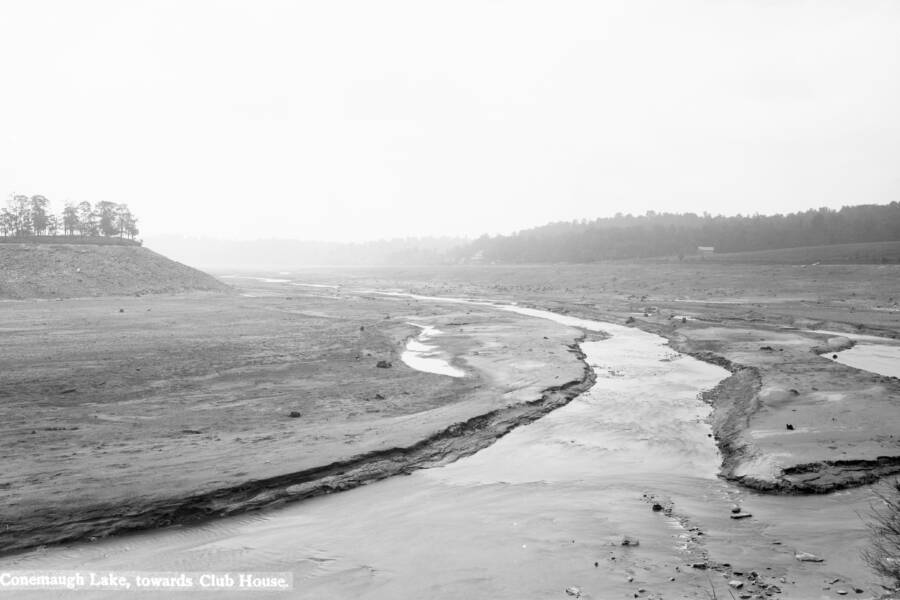
Bettmann/Getty ImagesThe barren area that was once Lake Conemaugh after the flood.
Despite having access to plenty of money, the club failed to properly maintain the dam. In fact, officials even lowered the height of the structure to make a wider road across the top of it and added screens to the spillway to stop the fish from swimming out, according to the National Park Service.
Both of these "improvements" greatly contributed to the dam's failure and the subsequent Johnstown Flood.
On May 31, 1889, an engineer at the dam noticed that the spillway screens had become clogged with debris after days of heavy rain. Sensing an oncoming disaster, he rode a horse into the nearby town of South Fork to warn its residents.
Unfortunately, the telegraph lines were down. Nobody could get in contact with Johnstown.
The dam collapsed just after 3 p.m., with a loud boom that could be heard from miles away, and the entirety of Lake Conemaugh rushed forward at speeds of up to 40 miles per hour.
The residents of Johnstown, just 14 miles downstream, had no idea what was coming.
The Total Devastation Caused By The Johnstown Flood
The tumbling water collected trees, buildings, and any other objects in its path as it swept through the villages east of Johnstown. By the time the wave of floodwater and debris reached the ill-fated town around 4 p.m., it was reportedly nearly 40 feet high.
A New York Times article from June 1, 1889, reported that Johnstown had been "practically wiped out of existence" after the flood "swept onward... like a tidal wave... houses, factories and bridges were overwhelmed in the twinkling of an eye and with their human occupants were carried in a vast chaos down the raging torrent."
As the 20 million tons of water tore through Johnstown, the flood destroyed everything in its path. Reliance on telegrams at the time made immediate reporting difficult, but one telegraph operator told reporters that he counted 63 bodies float past his office in just 20 minutes.
It didn't take long, however, for the true devastation to be revealed.
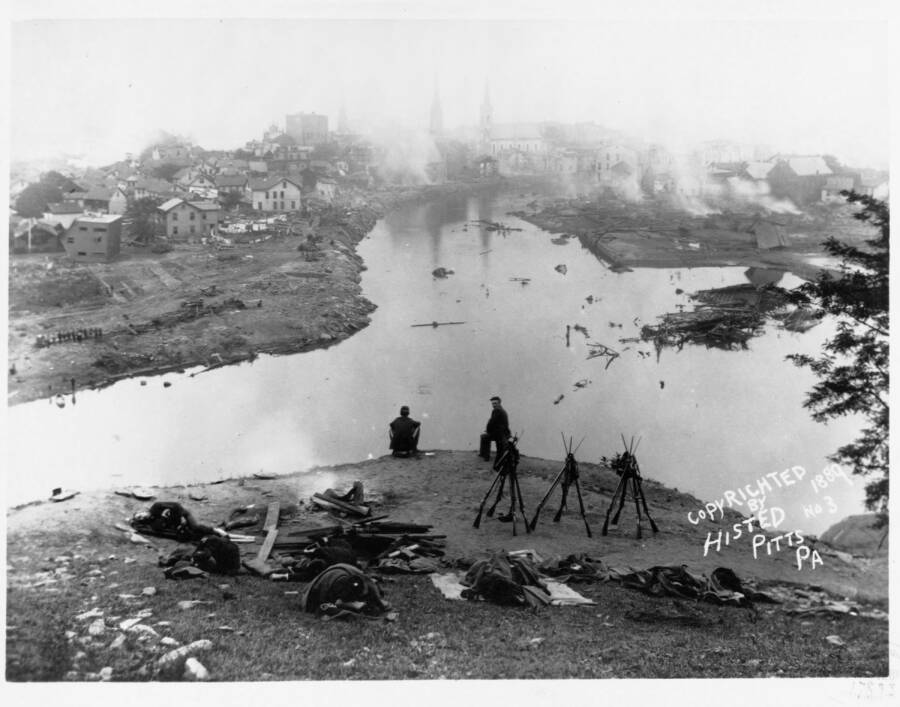
Library of Congress/Getty ImagesA group of survivors overlooks Johnstown after the flood.
Data from the Johnstown Area Heritage Association shows that a total of 2,209 people were killed by the flood, though 750 of them were never identified.
The flood claimed 99 entire families as victims, including 396 children. The waters carried some bodies as far as Cincinnati — 300 miles away. The last victim wasn't found until 1911.
The water wiped out four square miles of downtown Johnstown, destroyed 1,600 homes, and caused $17 million worth of property damage, with flood lines reaching up to 89 feet above the normal river level in places.
Some residents clung to trees, furniture, and roofs that had been torn from homes in order to stay afloat as the rushing waters carried them away. Eventually, all of the debris piled up downstream at the Pennsylvania Railroad Company's Stone Bridge. The heaps of debris stretched for 30 acres — and then it all caught on fire, killing many who had survived the initial onslaught of water.
By the end of the day, nearly ten percent of Johnstown's citizens were dead, and the small community was left to pick up the pieces.
Rebuilding Johnstown After The Great Disaster
Five days after the flood and fire, Clara Barton and the American Red Cross arrived to begin one of their first major peacetime disaster relief efforts.
The group managed to raise nearly $4 million to aid in the reconstruction of Johnstown. It took five years to rebuild the community, but unfortunately, nature proved to be an unstoppable force.
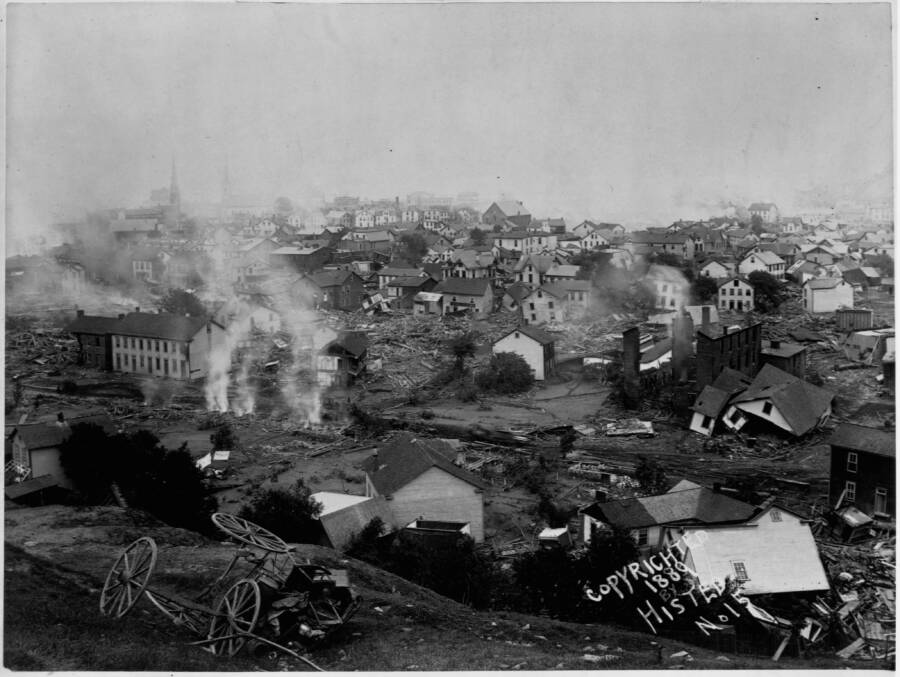
Library of Congress/Getty ImagesAn overview of the damage caused to Johnstown by the flood in 1889.
Johnstown faced significant, disastrous flooding again in 1936 and later in 1977, though neither event was comparable to the absolute destruction of the flood of 1889.
In fact, until the Galveston Hurricane a decade later, the Great Johnstown Flood marked the largest single-day loss of civilian life in American history — yet few people are even aware that it happened at all.
If you visit Johnstown's City Hall today, you can see for yourself the markers that indicate the high-water level for each flood and learn more about this little-known disaster.
The 1889 Johnstown Flood was one of the most devastating in American history. Learn how Britain faced similar destruction in 1953 when the North Sea flooded and killed hundreds of people. Or, explore the most devastating natural disasters of the 21st century.
